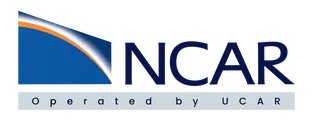BEST 2008-2009 Bottom-Anchored Moorings
To Access Resource:
This Resource Belongs to the Following Collection:
Questions? Email Resource Support Contact:
-
EOL Data Support
datahelp@eol.ucar.edu
UCAR/NCAR - Earth Observing Laboratory
Temporal Range
-
Begin: 2008-07-08T00:00:00Z End: 2009-07-12T23:59:59Z
| Resource Type | dataset |
|---|---|
| Temporal Range Begin | 2008-07-08T00:00:00Z |
| Temporal Range End | 2009-07-12T23:59:59Z |
| Temporal Resolution | N/A |
| Bounding Box North Lat | 63.00000 |
| Bounding Box South Lat | 56.00000 |
| Bounding Box West Long | -176.00000 |
| Bounding Box East Long | -164.00000 |
| Spatial Representation | N/A |
| Spatial Resolution | N/A |
| Related Links |
Documentation #1 : BEST_2008_Bottom-Anchored_Mooring_Data_ReadMe.txt Documentation #2 : BEST_2008_Mooring_C55_ADCP_ReadMe.txt Documentation #3 : BEST_2008_Mooring_C55_ReadMe.txt Documentation #4 : BEST_2008_Mooring_S55_ADCP_ReadMe.txt Documentation #5 : BEST_2008_Mooring_S55_ReadMe.txt Documentation #6 : BEST_Moorings_Map.pdf 102.194 : is a companion to dataset 102.162 |
| Additional Information | N/A |
| Resource Format |
ZIP: PKZIP (application/zip) |
| Standardized Resource Format |
Archive |
| Asset Size |
78 MB |
| Legal Constraints |
none |
| Access Constraints |
none |
| Software Implementation Language | N/A |
| Resource Support Name | EOL Data Support |
|---|---|
| Resource Support Email | datahelp@eol.ucar.edu |
| Resource Support Organization | UCAR/NCAR - Earth Observing Laboratory |
| Distributor |
UCAR/NCAR - Earth Observing Laboratory |
| Metadata Contact Name | EOL Data Support |
| Metadata Contact Email | datahelp@eol.ucar.edu |
| Metadata Contact Organization | UCAR/NCAR - Earth Observing Laboratory |
| Author |
Dr. Knut Aagaard |
|---|---|
| Publisher |
UCAR/NCAR - Earth Observing Laboratory |
| Publication Date | 2011-04-21T09:11:20 |
| Digital Object Identifier (DOI) | https://doi.org/10.5065/D69Z92XQ |
| Alternate Identifier |
102.162 |
| Resource Version | 1.0 |
| Topic Category |
oceans |
| Progress | completed |
| Metadata Date | 2025-01-03T22:15:33Z |
| Metadata Record Identifier | edu.ucar.eol::102.162 |
| Metadata Language | eng; USA |
| Suggested Citation | Dr. Knut Aagaard. (2011). BEST 2008-2009 Bottom-Anchored Moorings. 1.0. UCAR/NCAR - Earth Observing Laboratory. https://doi.org/10.5065/D69Z92XQ. Accessed 13 March 2025. |
Harvest Source
- ISO-19139 ISO-19139 Metadata

